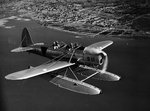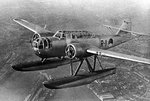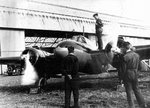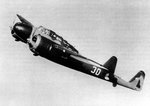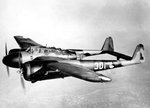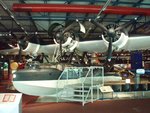- Thread starter
- #41
The D XXIII single-seat fighter was unusual in employing a fore-and-aft tandem engine arrangement, the prototype being powered by two 528hp Walter Sagitta I-SR engines and flying for the first time on 30 May 1939. Versions of the D XXIII were also proposed with Hispano- Suiza 12Xcrs, Junkers Jumo 210G and Rolls-Royce Kestrel XV engines, and although all-metal construction was intended, the prototype was fitted with a wooden wing of greater thickness/chord ratio in order to expedite the test programme. Owing to various problems, including rear engine cooling, only four hours of flight testing had been completed when the invasion of the Netherlands brought the D XXIII development programme to a halt. The proposed armament comprised two 7.9mm and two 13.2mm FN-Browning machine guns.





